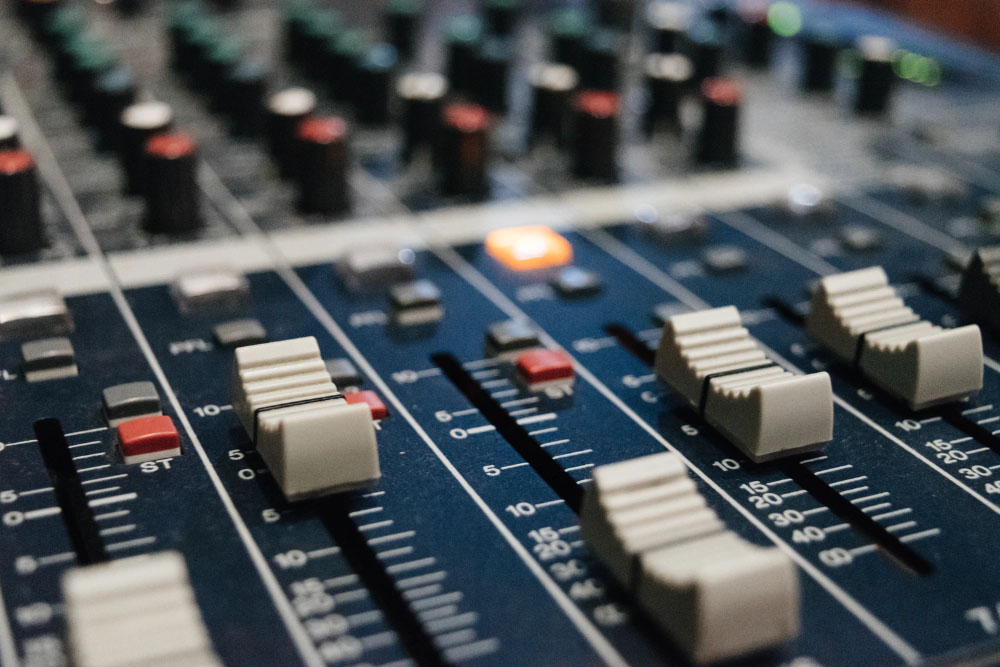Unlike many in professional audio, I still use and embrace analog consoles. For many applications they’re a perfect fit, and all that is required.
As a company owner I also like the return on investment delivered by some analog boards, along with the fact that newer models often cost significantly less than their digital counterparts. Even when factoring in the need for additional outboard gear to handle things like EQ and effects, I can still put together an analog FOH package for way less that the cost of a small digital mixer.
The used equipment market offers a bounty of quality mid-size and large-frame analog desks for a fraction of what they sold for new. And in installations where the console will not be moved around, a used larger frame analog unit and some outboard gear can be a cost-effective solution that balances function with budget.
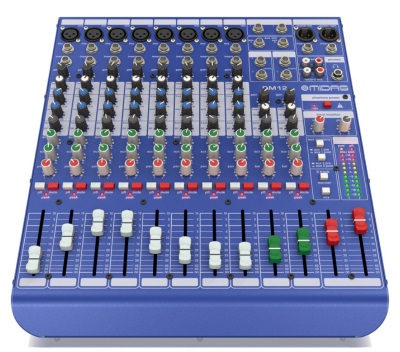
One important application for analog mixers is when mixing for in-ear monitors (IEMs). The few milliseconds of latency incurred into the signal path by digital consoles are usually not enough to cause problems, with one significant exception: vocal inputs routed back to the singer’s own ears. IEMs seal the ear canal, causing a boost in the perceived level of one’s own singing voice, called the occlusion effect.
In this specific instance, any latency at all is easily perceptible by the vocalist because the slightly delayed signal creates a comb filter with the vocalist’s own singing, which is quite apparent as a tonal change and a sensation of distance. For this reason, analog mixers are still a popular choice for IEM mixing applications, because they have no latency and avoid the problem altogether.
Baby Steps
Another application for choosing analog over digital is with new and inexperienced users. It’s way easier for “newbies” to figure their way around analog board than on most digital consoles where there’s usually the need to navigate through menus and/or layers to get what they want. I say “most” because there are a few digital models that do make it easier for inexperienced users to operate effectively.
When I teach audio classes, we always start with analog mixers. Recently while instructing a group of new volunteers at a church, one of the students asked why I was teaching the basics via analog when the main church consoles were digital. I replied that, simply, that they needed to learn and understand signal flow first, and this (and many other audio essentials) are far easier to grasp many concepts within the analog realm.
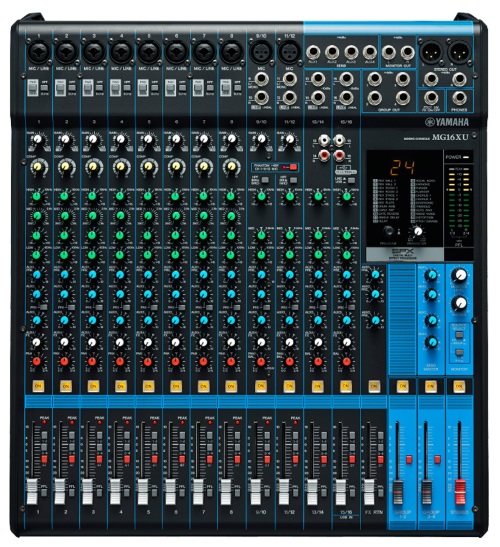
We usually start with a 6-channel mixer, where it’s straightforward to see how the input flows through the channel to the EQ and aux sends, as well as how any inserts can route the signal to outboard gear and then back into the board. With minimal routing options along with dedicated knobs and connections for each function, students can usually grasp signal flow concepts and understand the basics without getting overwhelmed by a lot of features.
We then move on to a 16-channel unit. In addition to the extra channels, it also has a 3-band EQ rather than the 2-band capability of the smaller mixer. Once they understand this model, we move on to a 24-channel console with a 4-band semi-parametric (a.k.a., mid-sweep) EQ as well as aux sends that can be configured pre- or post-EQ and pre- or post-fader.
Finally, we conclude with a 32-input unit with 4-band parametric EQ, subgroups, and VCAs. While switching between the various consoles I also introduce outboard gear that can be inserted as well as routed between the console and the power amplifiers/powered loudspeakers.
Over the years I’ve found that most students quickly come to understand the basics of how a console can be utilized to route and manipulate signals. Only then do I introduce them digital mixers, and by this time, their routing and features can be easily understood.
Accessible To Many
My company serves a lot of corporate meetings and speeches where only a few channels and limited processing are required, with analog consoles being a perfect fit in terms of functionality. A typical meeting room may only have a podium microphone, a lavalier mic and a DI for audio playback via computer. Sometimes there may be the need for a second lav mic for a second presenter on stage.
While numerous smaller digital models with 8 or less channels can most certainly do the trick, these applications usually don’t require additional processing like gates or delays on every input. We want a basic console with few knobs and buttons because in many cases there’s not a full-time tech in the room, so unskilled presenters, event planners and room monitors need to operate the mixer for the presentation.
Most corporate events have a large meeting known as a “general session” for all attendees, and these usually have techs running the show. Smaller “breakout” sessions target a specific topic and/or group of people, and may be large enough to be supported by one or more techs.
Some events utilize “floater” techs who serve several breakout sessions, making sure the gear is working and the presenters are properly outfitted with lav mics. However, since these sessions usually overlap, the techs can’t stay in any one room for long, and that’s where others come into the picture to run the board, usually making simple adjustments such as volume.
Having fewer controls lowers the chances of the clients getting themselves into trouble.
Some smaller analog consoles also include basic graphic EQ, and combined with the DSP built into most modern powered loudspeakers, processing is taken care of. Some analog models also facilitate live recording via USB to a computer.
For “more seasoned” techs like me, there’s also a comfort level with analog. I can walk up to any analog board, and within a few minutes of noting where certain controls are located on the surface, feel comfortable and confident that I can do my job rather than getting tangled up in some software that I don’t know.
Complicating Factors
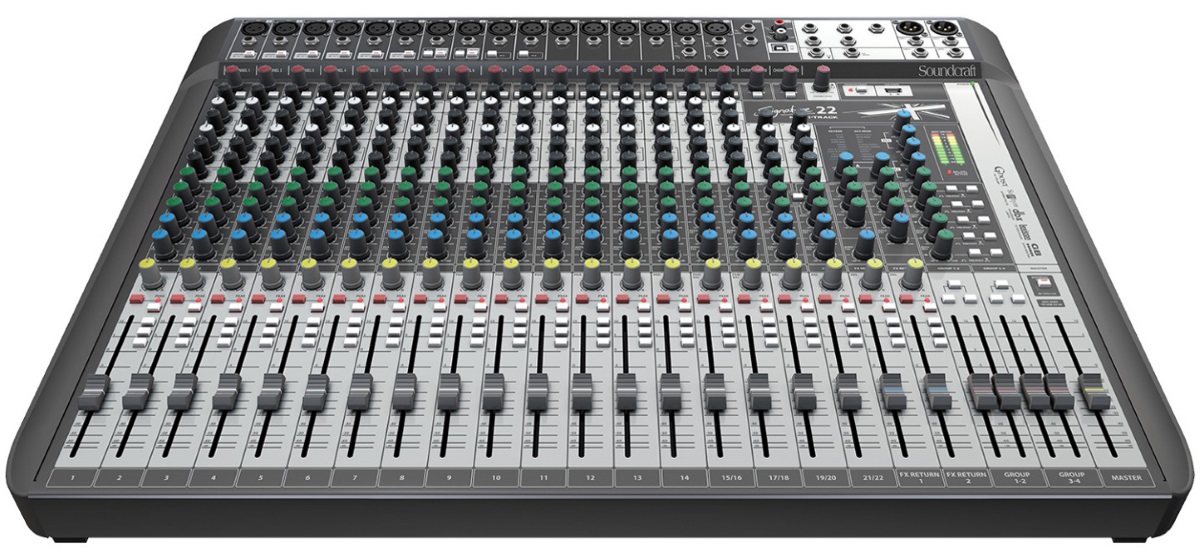
When I’m working freelance, sometimes I don’t get the opportunity to specify the console, and on some gigs I don’t even know what I’m getting until I arrive at the site. To eliminate problems, I work to keep up with all the digital and analog desks that are common in the market I serve, with several gigabytes of console manuals downloaded on my computer, but there’s still a curveball thrown my way every now and again.
For example, a few months ago I was working a corporate event where the A/V company supplied a new digital console from a reputable manufacturer. The only problem? I’d never used it before. So I spent several minutes poking around the board, trying to learn my way around it, and then proceeded to set up the system’s loudspeakers and microphones in the room.
When everything was in place, I asked another tech to stand at the podium and talk into the mic. I selected the podium channel, looked at the screen, saw an icon for 48-volt phantom power, and pressed the icon to activate it for the condenser mic. When pressed, however, the icon neither changed color nor activated the phantom circuit. Scrolling through the console’s menu didn’t suggest a way to turn it on. No phantom power, no condenser mic. No mic, no speech. No speech, no client.
I tried to go online to check out the manual but we were in a large casino convention center without internet access (or cell service for that matter). I walked over to the meeting room next door and asked another tech if he knew how to activate the phantom power, and he replied that the 48-volt icon needed to be pressed and held for a few seconds. Apparently, I wasn’t holding it long enough for the circuit to engage.
When I returned to my room there was yet another tech waiting for me, looking for help with the same problem. We decided to go to every room and make sure that all of the techs were aware of what they needed to do. Most weren’t aware of it.
While this quirk was encountered on set up day with plenty of time to get it resolved, I’ve seen similar digital console “quirks” get audio folks into trouble at shows, with quite a few of them looked down upon by clients who now thought they were inept because they didn’t have knowledge of a particular piece of gear.
On the other hand, I’ve never seen an analog console get a tech lost or stumped, with one exception that was resolved quickly. The issue: the previous user had entered his own passcode for the desk and we didn’t know the factory default passcode so we couldn’t get many of the functions to work. The quick solution was to engage every channel’s “Safe” buttons and mix directly down to the left and right outputs.
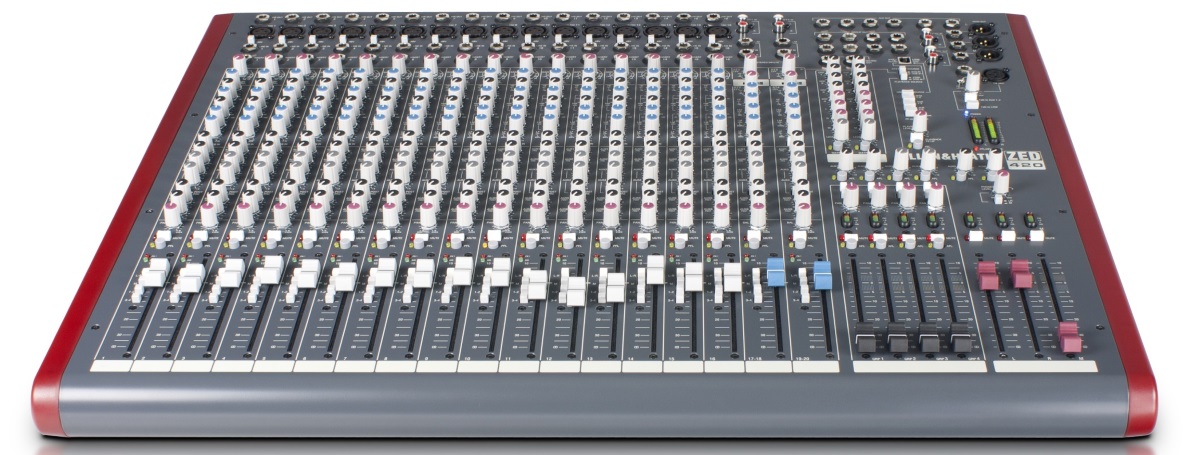
Making A Resurgence
Now, at this point you may be thinking that I don’t like digital consoles, but that’s far from the truth. I love the features and flexibility of digital units, but there’s a place for both platforms in the audio world. My company deploys both types, selecting what’s most applicable to the given event.
For a recent meeting, we employed both at the same time. We ran 16 table mics into an analog mixer, and then fed that into a compact digital console that sported a screen with virtual faders. Analog gave me faders under hand so I could quickly make volume changes and follow the discussion while digital provided the main EQ and recording function.
While there aren’t many (any?) manufacturers making large-frame (40-plus channels) analog consoles for sound reinforcement, there are certainly still quite a few out on the road with tours and deployed for installs, with some models still holding their value quite well. In the recording sector, certain older analog desks are sought after by commercial and project studios alike, and many of these prized vintage units go for big bucks.
There are also some companies offering “boutique” high-end analog consoles and/or outboard gear. I recently attended a concert where the house console was a large-frame digital and parked next to it was a rack loaded with premium analog preamps and compression for the “money” channels.
Even with digital networks like Audinate Dante and MADI taking over many routing and transport duties, analog audio is far from dead, and in some cases it is even making a resurgence. For many, analog may be a great option, especially in cases where budgets are limited, demands aren’t huge, and users lack in experience.

